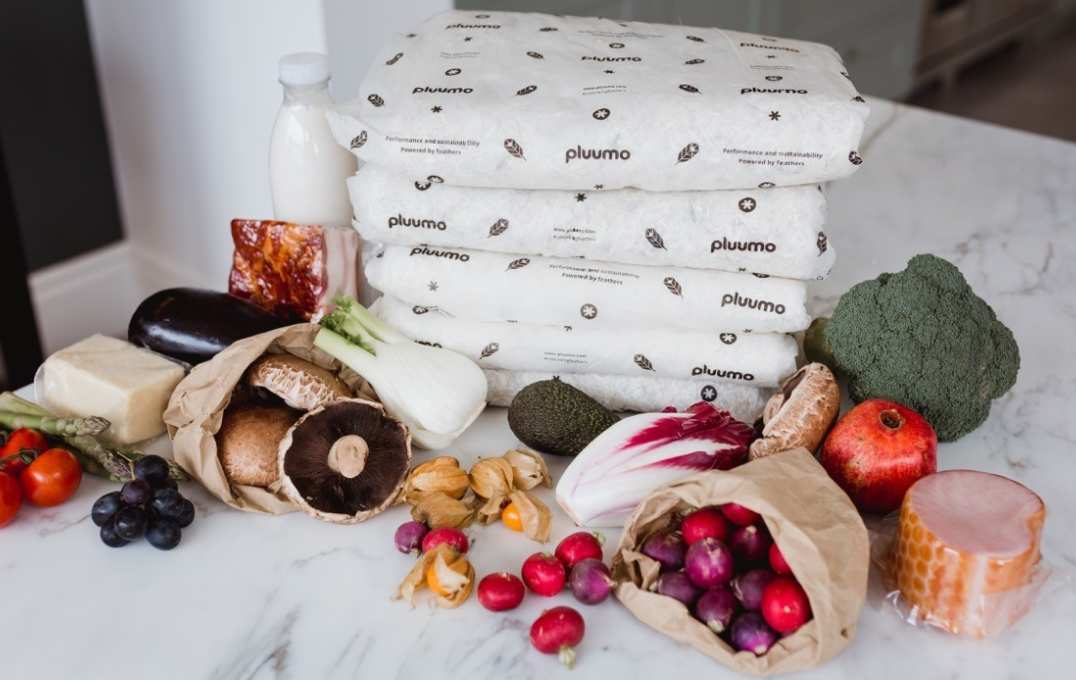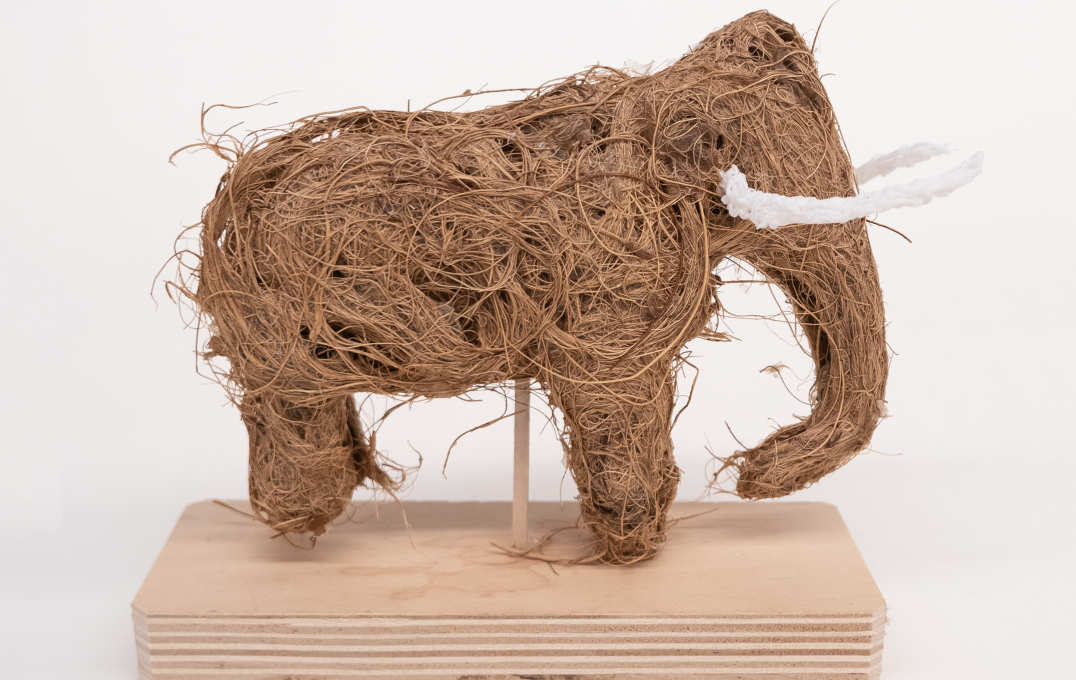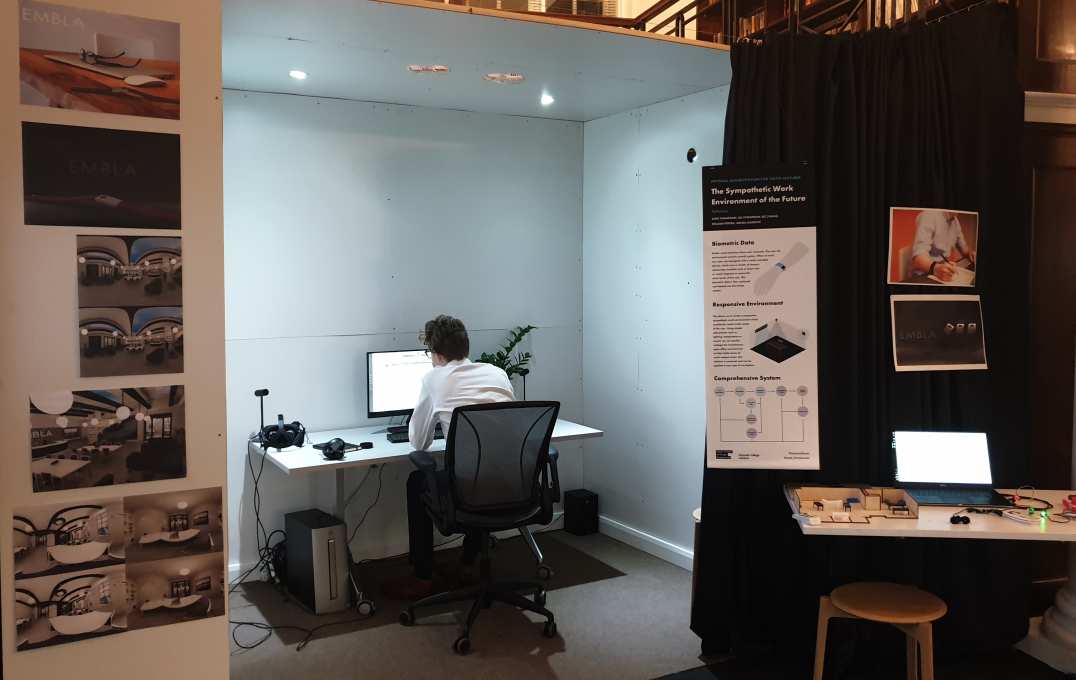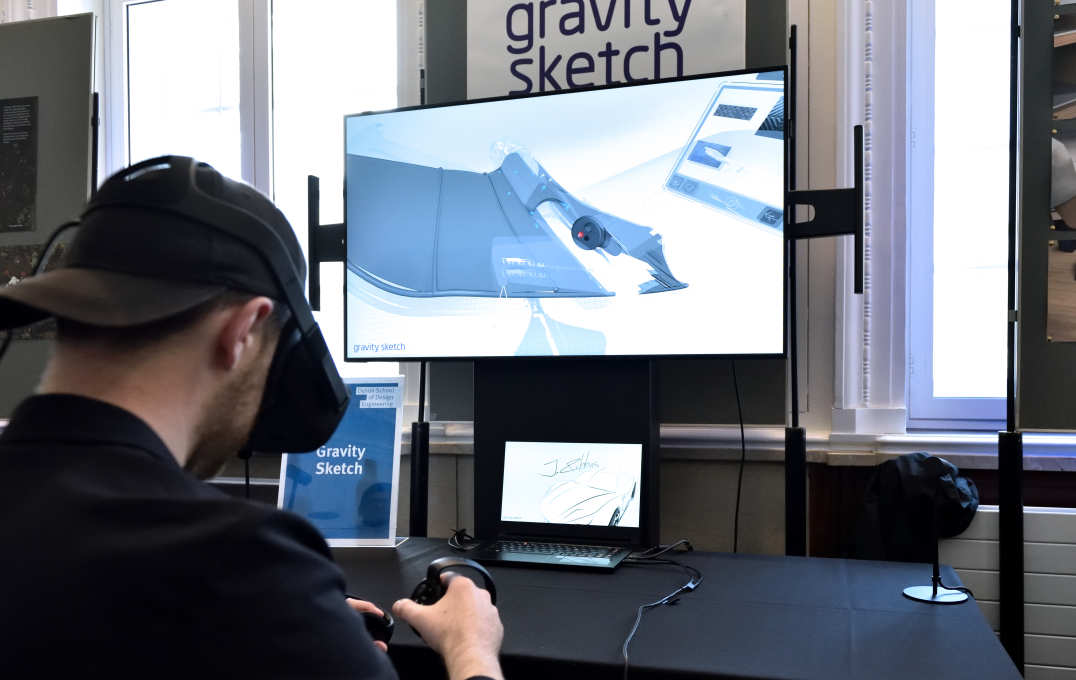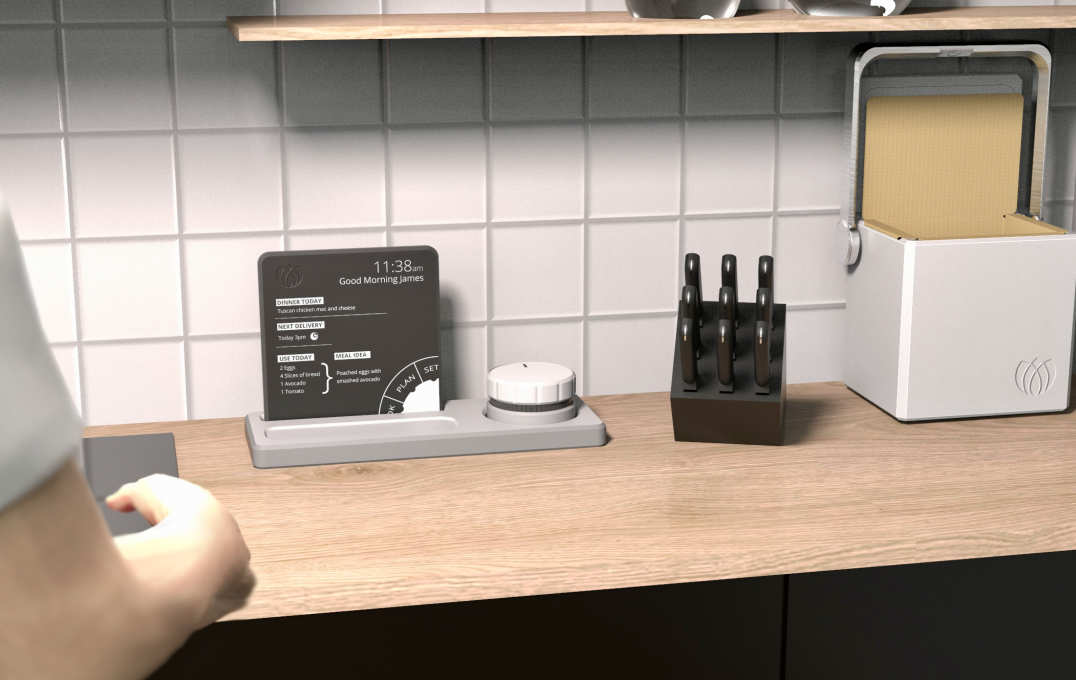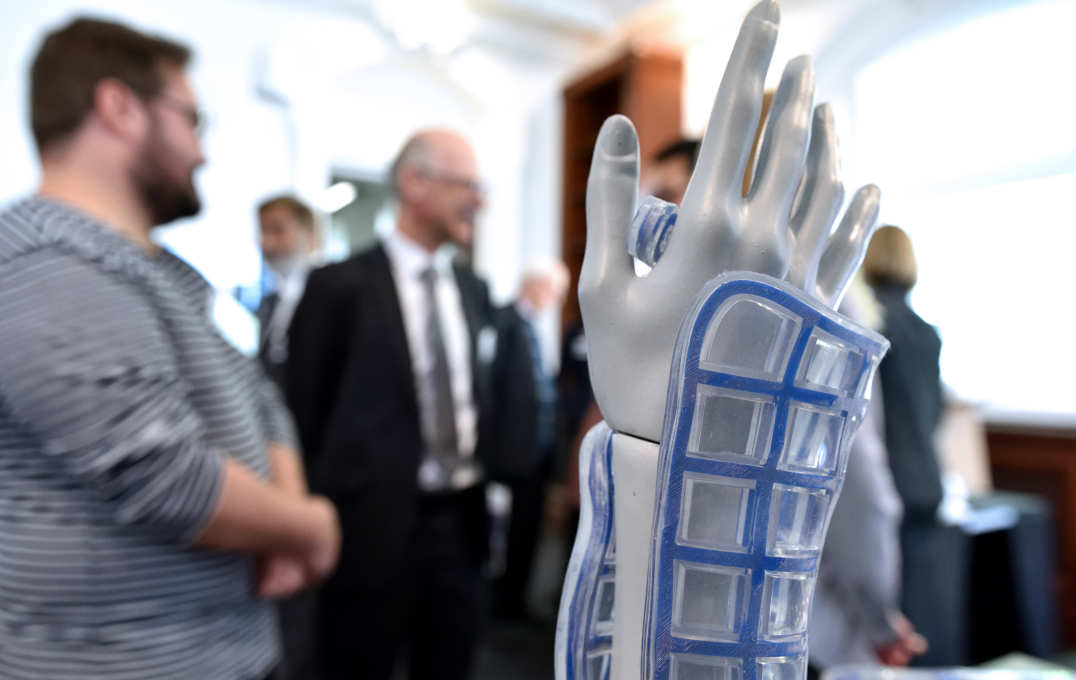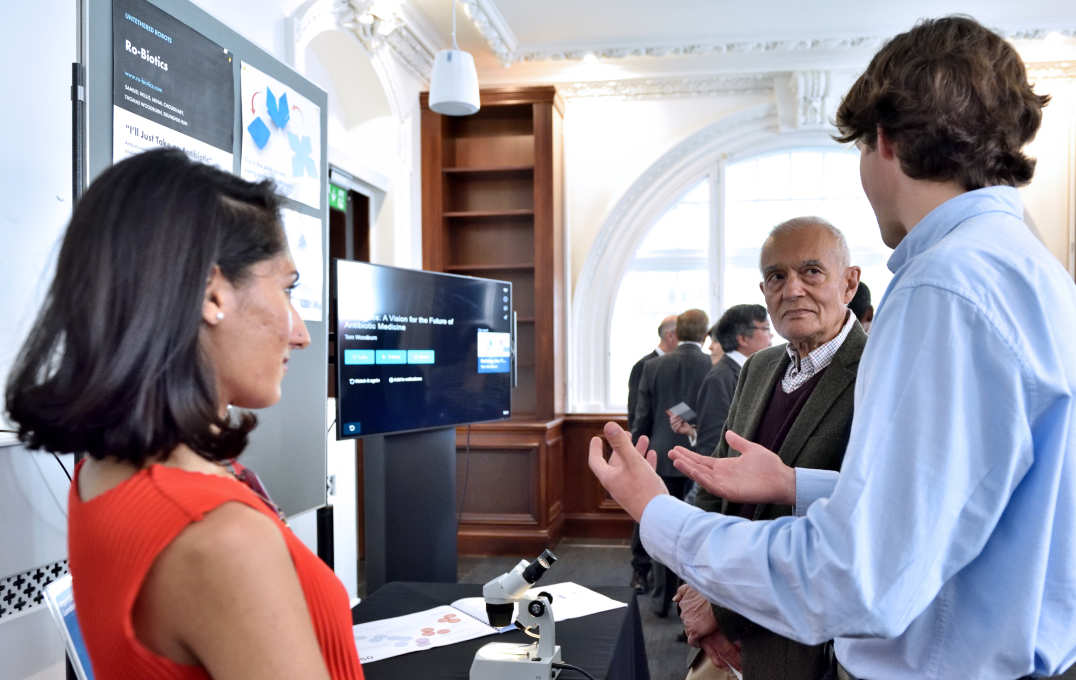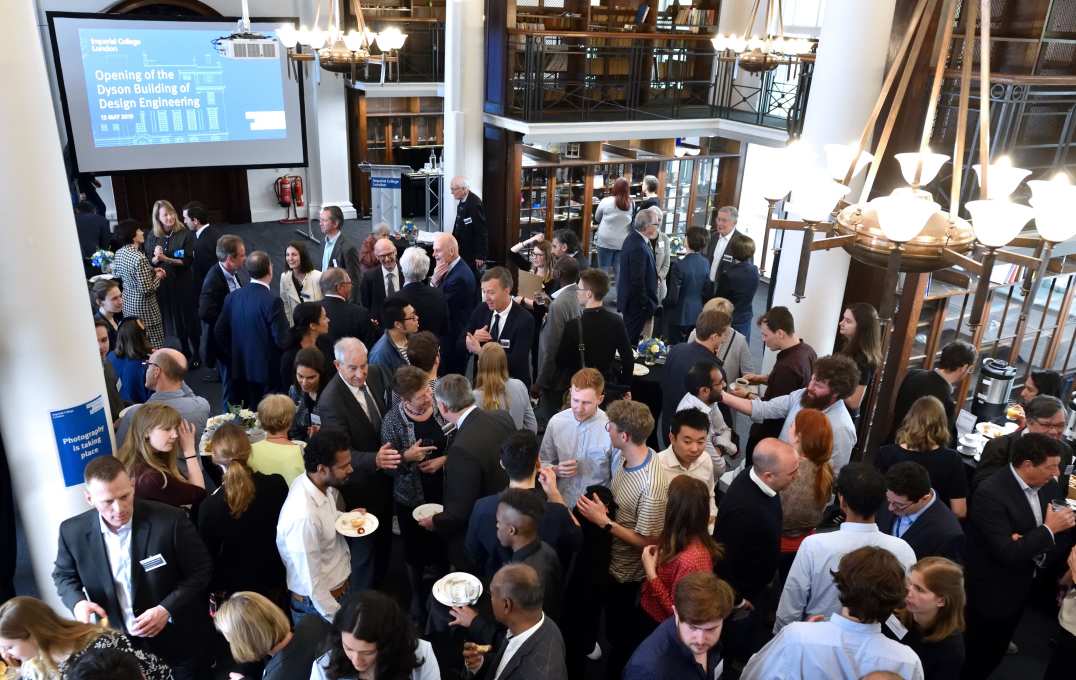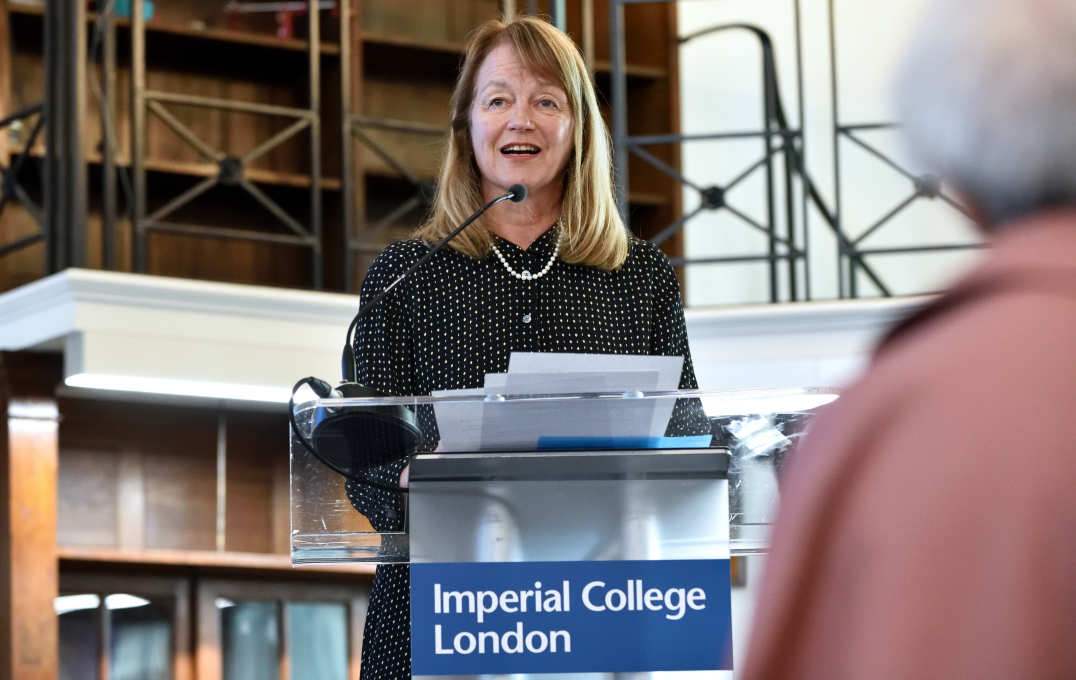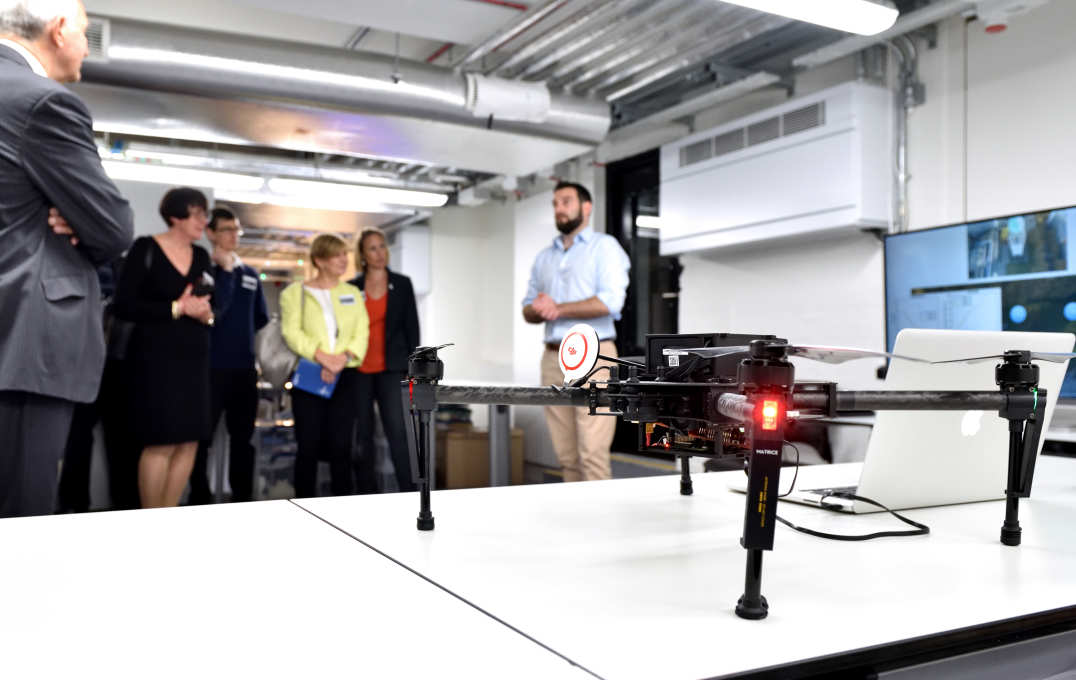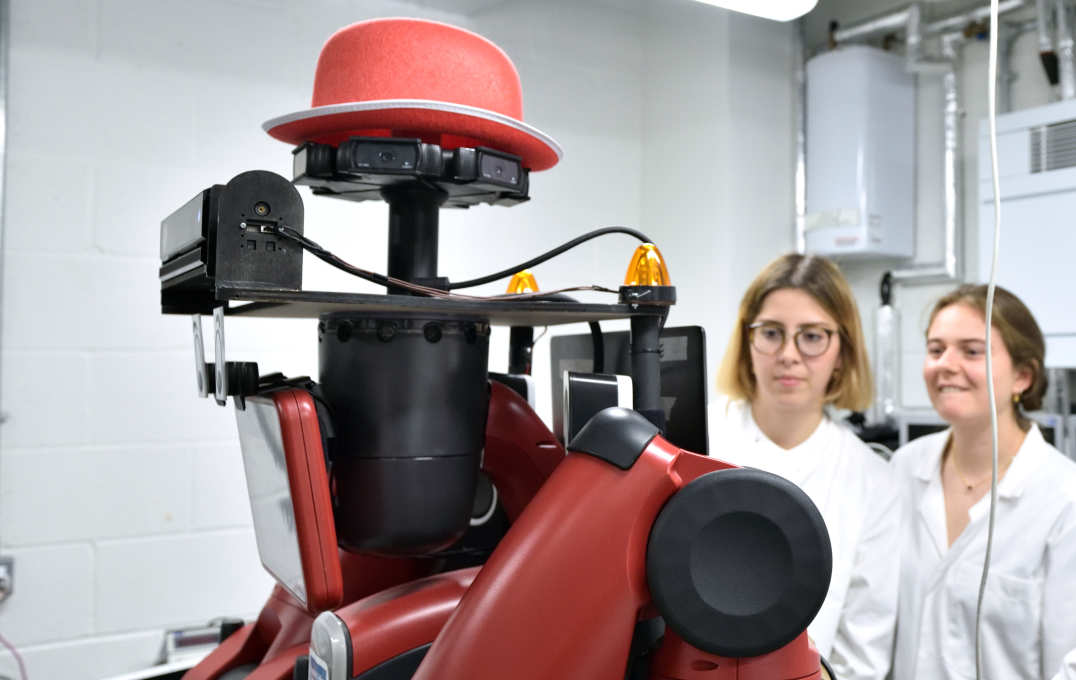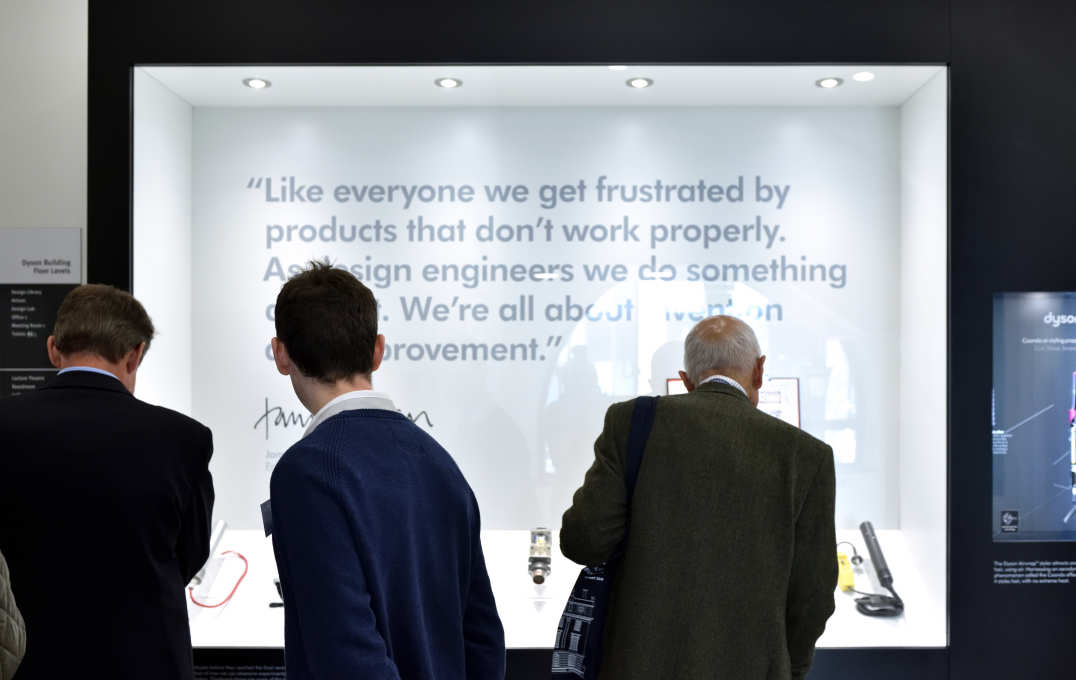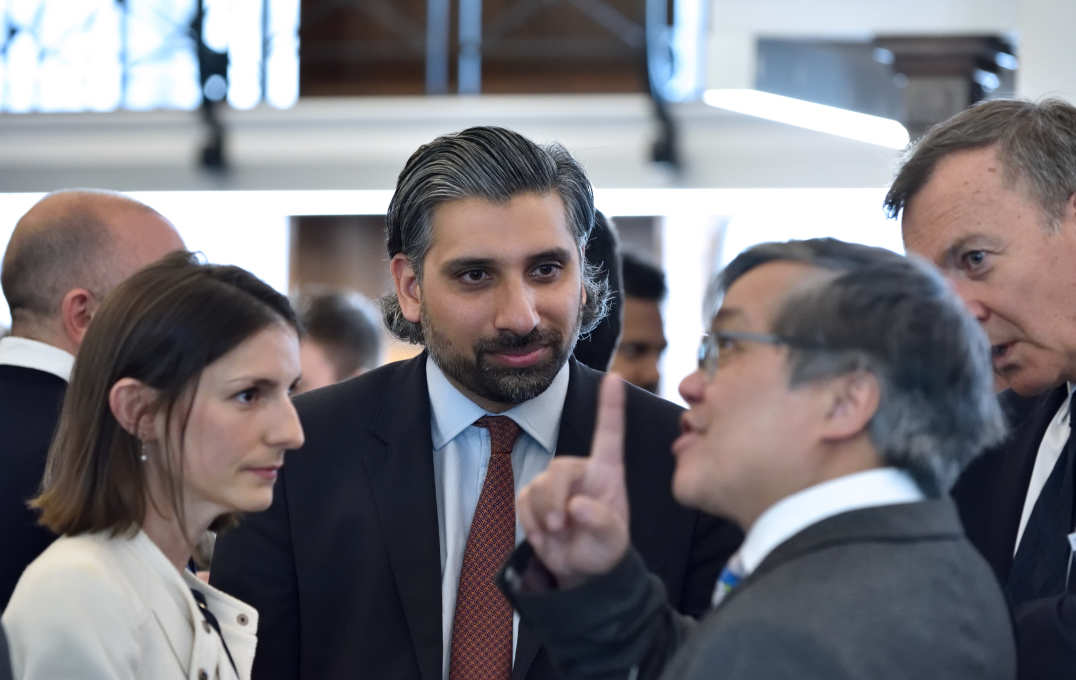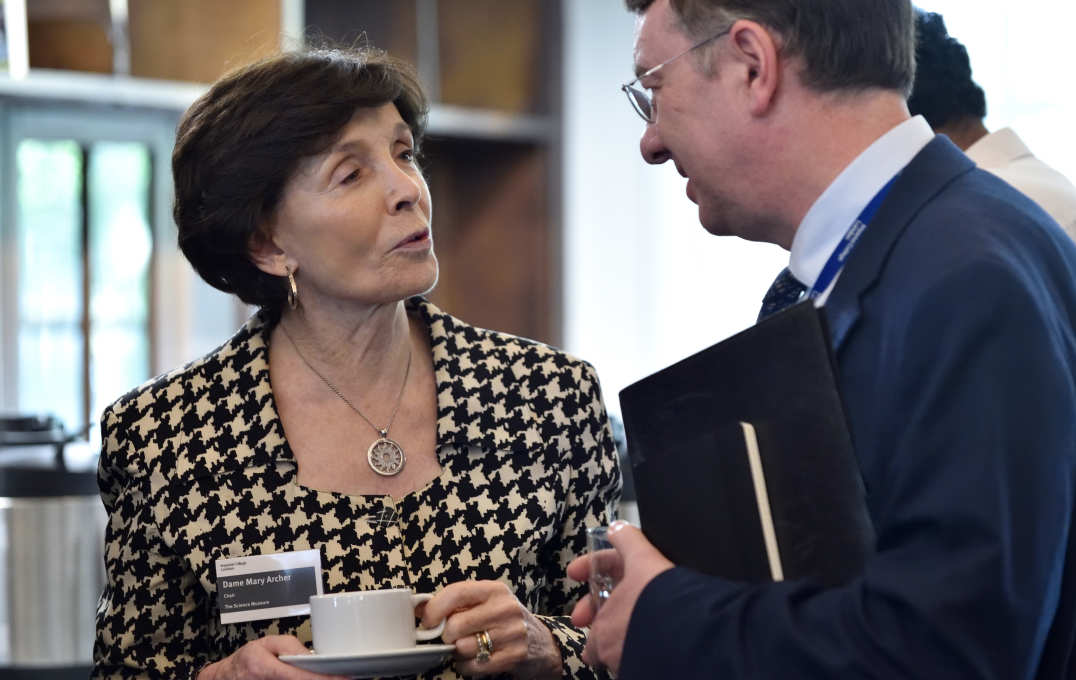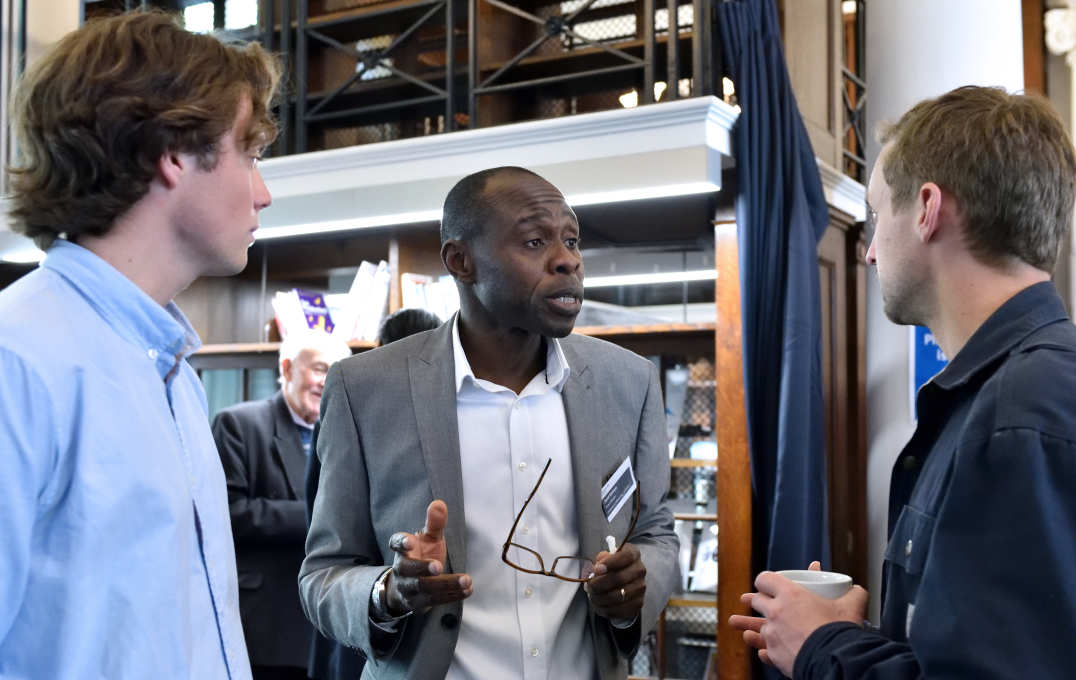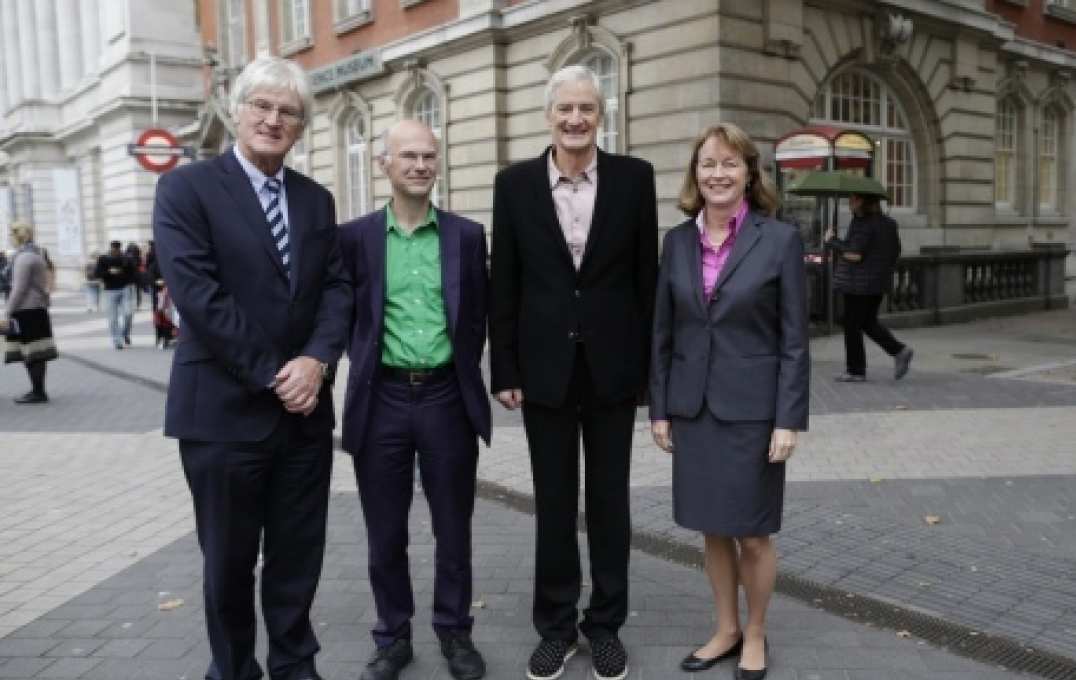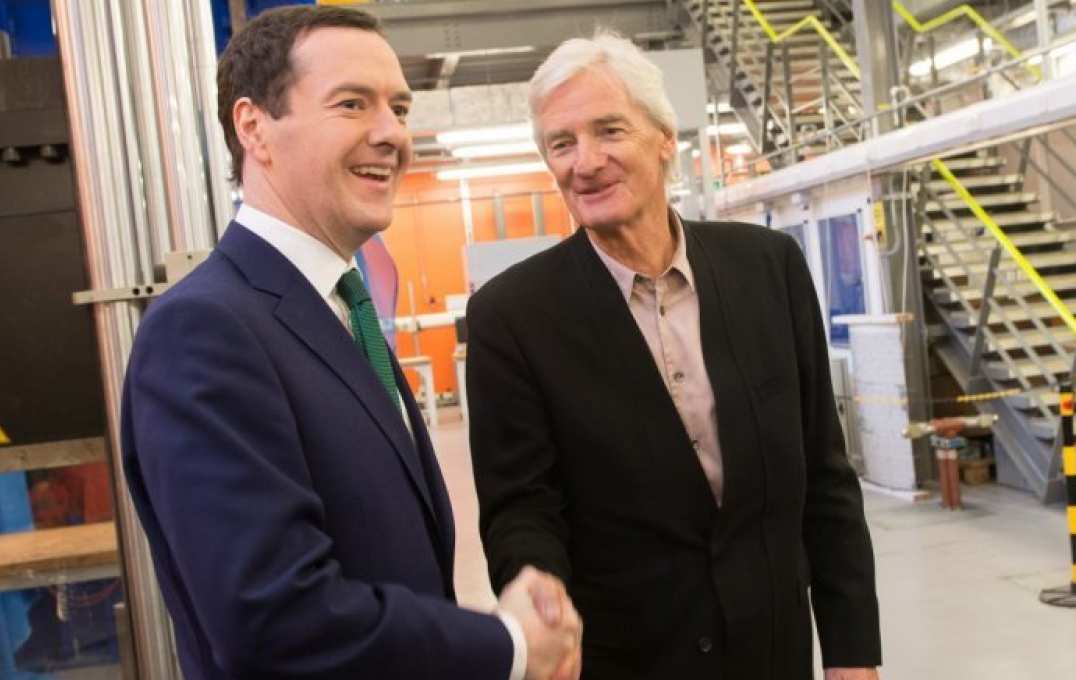Celebration as Dyson School building “for design engineers of the future” opens

Dyson Foundation Head Lydia Beaton with Nigel Brandon, Alice Gast, and Peter Childs
With its first cohort of MEng students set to graduate this year, Imperial’s Dyson School of Design Engineering has now officially opened.
Founded in July 2014 with £12million from the James Dyson Foundation on top of other funders, the School is hailed by Sir James Dyson as a “hub for design engineers of the future.”
The School was officially launched in 2015 by Sir James and then-Chancellor George Osborne. Now, its permanent home is officially open.
Opening the building, Imperial’s President Professor Alice Gast said: “The James Dyson Foundation’s generous donation…let us create a world-leading school for a new kind of engineer who will lead the next technological revolution.”
The School
I am thrilled to declare the School’s new building officially open. Professor Peter Childs Head of the Dyson School of Design Engineering
The School blends the principles of engineering and design to tackle modern-day challenges like climate change, food security, and sustainability.
First pitched by founding Head of the School Professor Peter Childs, it bases itself on a new paradigm for design engineering – offering degrees founded on the development of mathematics and analysis, form and aesthetics, and philosophy and rationale.
Professor Childs said: “I first pitched my ideas to Sir James in 2013, which he met with enthusiastic, substantial, and enthusiastic support.
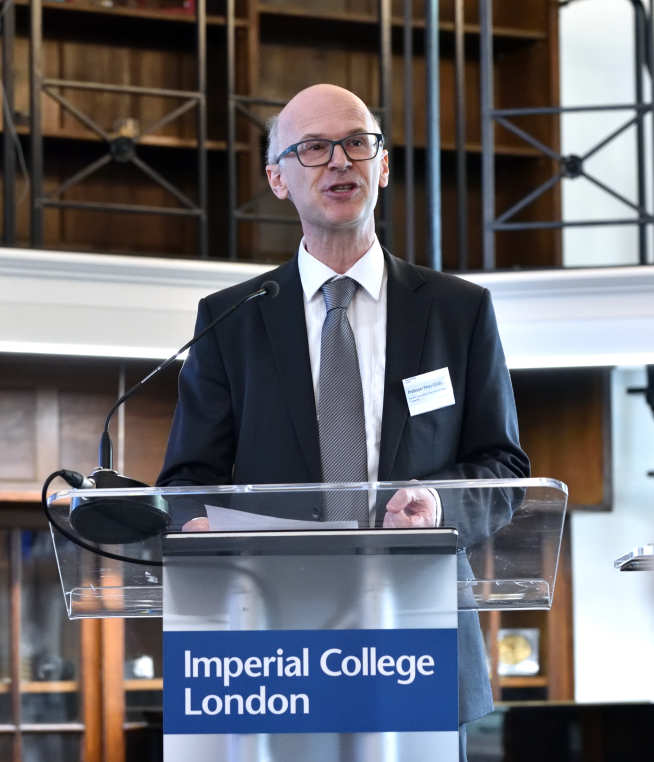
“After much hard work and a move into new premises, I am thrilled to declare the School’s new building officially open.”
The James Dyson Foundation, which is the charitable arm of the Dyson Company, contributed £12m to the School. Imperial contributed approx. £48m, and the Royal Commission For The Exhibition Of 1851 contributed £200,000. The total £60m helped recruit staff and students, and to purchase and refurbish the building.
The students
Without these bright minds we would not be able to realise significant technology ambitions. Sir James Dyson James Dyson Foundation
The opening comes as the School’s first cohort of MEng students, who joined in 2015 and 2016, prepare to graduate in October 2019. The School actively encourages female students to enter the field and nearly half (43 per cent) of the students are women.
Refurbished with design principles in mind, the School encourages collaboration and creative, entrepreneurial thinking.
Student tour guides at the opening pointed out how the building’s airy, open plan spaces help spark conversations and idea exchanges across year groups, courses, and key disciplines, which currently span psychology, robotics, electronics, mechanical engineering, and design engineering. They also noted how these factors help form strong bonds among them.
Of the students, Sir James said: “Without these bright minds we would not be able to realise significant technology ambitions.”
The projects
The School’s students are already finding novel solutions to modern global challenges, with a focus on sustainability, urban living, and healthcare. Eight groups of current and former design engineering students from the School’s three taught programmes showcased their inventions at the opening’s special exhibition, where guests met staff and students of the School.
The event
Esteemed friends and colleagues of the School and Imperial joined us to celebrate the opening on 13 May 2019.
Skills shortage
The world needs more engineers to...embrace the transformations happening across the world. Professor Nigel Brandon Dean of the Faculty of Engineering
By 2020, British firms are predicted to be short of one million engineers, which, said Sir James, will affect how the country handles upcoming challenges.
Sir James considers the School instrumental in addressing this, but said the problem needs us "not only to encourage more young people into engineering, but to make sure they are empowered to be creative, innovative and clever in their work.”
Professor Nigel Brandon, Dean of Imperial's Faculty of Engineering said: “The world needs more engineers to solve global challenges such as climate change, pollution, clean water, health, and food security, and engineers who are able to embrace the transformations happening across the world.”
Want to design the future? Apply to study at the Dyson School of Design Engineering.
Article supporters
Article text (excluding photos or graphics) © Imperial College London.
Photos and graphics subject to third party copyright used with permission or © Imperial College London.
Reporter
Caroline Brogan
Communications Division
